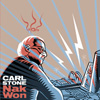 The three songs that compose this full-length present three distinctexperiences: the chaos of the electric world, the sublime glow of theheavenly spheres, and the mayhem of an ever-increasing globalconsciousness. It all begins with sine waves bolting through theatmosphere like a futuristic weapon bent on destroying the moon. Slowlythe tones begin to skip and play musical chairs changing both theirtones and their placement inside my brain. Once inside they wreak havocand expand the auditory receptors in preperation for the fuzzy hazethat nearly rises to the surface. The rhythmic tones bounce manicallyand are somewhat subdued by the calm underneath but eventually everysound returns to its origin and the sound of buzzing electricity is theonly thing left. "Kreutz" permeates every reigion of space with aseries of rolling melodic tones. Closing my eyes I can imagine thefirey birth of a solar system unfolding before my eyes as the variouselements cool and new-born planets revolve peacefully about the sun.This stands in stark contrast to both "Nak Won" and the closing "DarulKabap." Various ethnic instruments open this nearly half-hour longpiece and unfold into a flower of technological and ancestral influencealike. Everything begins gently and slowly with each sound having itsown room to breathe but then a populace of sounds begins to create acrowd and the original instruments become suffocated. Voices replacethe instruments but are struck down by manipulating their tone andlength. The "primitive" and "advanced" meet somewhere in the middle andthen a rhythm is created out of cutting back and forth between the twoin a schizophrenic fury and by introducing some percussive instrumentsinto the mix. Confusion, anxiety, and relief all exist within the pieceand when it's all over I am stunned by the beauty that is found in thisfusion of vocal, acoustic, and electronic influences. Nak Wonis an example of the original and unique things that can still be donewithin the realm of electronic composition and noise. Are the purveyorsof all things glitch out there paying any attention?
The three songs that compose this full-length present three distinctexperiences: the chaos of the electric world, the sublime glow of theheavenly spheres, and the mayhem of an ever-increasing globalconsciousness. It all begins with sine waves bolting through theatmosphere like a futuristic weapon bent on destroying the moon. Slowlythe tones begin to skip and play musical chairs changing both theirtones and their placement inside my brain. Once inside they wreak havocand expand the auditory receptors in preperation for the fuzzy hazethat nearly rises to the surface. The rhythmic tones bounce manicallyand are somewhat subdued by the calm underneath but eventually everysound returns to its origin and the sound of buzzing electricity is theonly thing left. "Kreutz" permeates every reigion of space with aseries of rolling melodic tones. Closing my eyes I can imagine thefirey birth of a solar system unfolding before my eyes as the variouselements cool and new-born planets revolve peacefully about the sun.This stands in stark contrast to both "Nak Won" and the closing "DarulKabap." Various ethnic instruments open this nearly half-hour longpiece and unfold into a flower of technological and ancestral influencealike. Everything begins gently and slowly with each sound having itsown room to breathe but then a populace of sounds begins to create acrowd and the original instruments become suffocated. Voices replacethe instruments but are struck down by manipulating their tone andlength. The "primitive" and "advanced" meet somewhere in the middle andthen a rhythm is created out of cutting back and forth between the twoin a schizophrenic fury and by introducing some percussive instrumentsinto the mix. Confusion, anxiety, and relief all exist within the pieceand when it's all over I am stunned by the beauty that is found in thisfusion of vocal, acoustic, and electronic influences. Nak Wonis an example of the original and unique things that can still be donewithin the realm of electronic composition and noise. Are the purveyorsof all things glitch out there paying any attention? The three songs that compose this full-length present three distinctexperiences: the chaos of the electric world, the sublime glow of theheavenly spheres, and the mayhem of an ever-increasing globalconsciousness. It all begins with sine waves bolting through theatmosphere like a futuristic weapon bent on destroying the moon. Slowlythe tones begin to skip and play musical chairs changing both theirtones and their placement inside my brain. Once inside they wreak havocand expand the auditory receptors in preperation for the fuzzy hazethat nearly rises to the surface. The rhythmic tones bounce manicallyand are somewhat subdued by the calm underneath but eventually everysound returns to its origin and the sound of buzzing electricity is theonly thing left. "Kreutz" permeates every reigion of space with aseries of rolling melodic tones. Closing my eyes I can imagine thefirey birth of a solar system unfolding before my eyes as the variouselements cool and new-born planets revolve peacefully about the sun.This stands in stark contrast to both "Nak Won" and the closing "DarulKabap." Various ethnic instruments open this nearly half-hour longpiece and unfold into a flower of technological and ancestral influencealike. Everything begins gently and slowly with each sound having itsown room to breathe but then a populace of sounds begins to create acrowd and the original instruments become suffocated. Voices replacethe instruments but are struck down by manipulating their tone andlength. The "primitive" and "advanced" meet somewhere in the middle andthen a rhythm is created out of cutting back and forth between the twoin a schizophrenic fury and by introducing some percussive instrumentsinto the mix. Confusion, anxiety, and relief all exist within the pieceand when it's all over I am stunned by the beauty that is found in thisfusion of vocal, acoustic, and electronic influences. Nak Wonis an example of the original and unique things that can still be donewithin the realm of electronic composition and noise. Are the purveyorsof all things glitch out there paying any attention?
The three songs that compose this full-length present three distinctexperiences: the chaos of the electric world, the sublime glow of theheavenly spheres, and the mayhem of an ever-increasing globalconsciousness. It all begins with sine waves bolting through theatmosphere like a futuristic weapon bent on destroying the moon. Slowlythe tones begin to skip and play musical chairs changing both theirtones and their placement inside my brain. Once inside they wreak havocand expand the auditory receptors in preperation for the fuzzy hazethat nearly rises to the surface. The rhythmic tones bounce manicallyand are somewhat subdued by the calm underneath but eventually everysound returns to its origin and the sound of buzzing electricity is theonly thing left. "Kreutz" permeates every reigion of space with aseries of rolling melodic tones. Closing my eyes I can imagine thefirey birth of a solar system unfolding before my eyes as the variouselements cool and new-born planets revolve peacefully about the sun.This stands in stark contrast to both "Nak Won" and the closing "DarulKabap." Various ethnic instruments open this nearly half-hour longpiece and unfold into a flower of technological and ancestral influencealike. Everything begins gently and slowly with each sound having itsown room to breathe but then a populace of sounds begins to create acrowd and the original instruments become suffocated. Voices replacethe instruments but are struck down by manipulating their tone andlength. The "primitive" and "advanced" meet somewhere in the middle andthen a rhythm is created out of cutting back and forth between the twoin a schizophrenic fury and by introducing some percussive instrumentsinto the mix. Confusion, anxiety, and relief all exist within the pieceand when it's all over I am stunned by the beauty that is found in thisfusion of vocal, acoustic, and electronic influences. Nak Wonis an example of the original and unique things that can still be donewithin the realm of electronic composition and noise. Are the purveyorsof all things glitch out there paying any attention?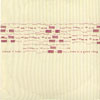 Released back in October 2002, this second release on the City CentreOffices label for the Berlin electronic duo of Bertram Denzel and ErikHuhn layers samples of acoustic instruments with electronic elements ofsynth patches, drum modules and other ambient sounds. The bulk of Time Is A Good Thing'snear sixty minutes are comprised of rhythmic compositional collagesthat convey a relaxed atmosphere without a lot of chord progressionsgoing on to crowd the space being created. The warm, lilting guitarmotifs on "Chicago" are subtly accented with keyboard and anchored byminimal bass to gradually draw in distant drones for a very invitingopening track. "Kinogat" inches along to rhythmic, sampled low-endstatic pops and a single note backbeat while rich synthesizer chordswash over to produce a somewhat melancholic track with an impliedsectional form. The distraction created by the out of place and drawnout "Shaffel" sounds in part to be a mismatch of glitchy rhythmicsamples that continue without any chance of resolving themselves whilelow end rumbles pop up like unwelcomed speed bumps. The tracks beyondthis melee more than make up for it. The whisper of rhythm nailed downby a steady kick drum on "Faller" is played off by sampled,heavy-handed acoustic guitar motifs that through repetition appear tobecome fuller and more intense. On first listen, it may appear thatDenzel + Huhn have grouped together a lot of nice choices for soundsand rhythms to compensate for a lacking sense of traditionalcomposition. However, it does become apparent in the given setting thatthe mixing of the sounds used and the sense of time and placement ofthem are more integral than a lot of melodies and chord progressions.
Released back in October 2002, this second release on the City CentreOffices label for the Berlin electronic duo of Bertram Denzel and ErikHuhn layers samples of acoustic instruments with electronic elements ofsynth patches, drum modules and other ambient sounds. The bulk of Time Is A Good Thing'snear sixty minutes are comprised of rhythmic compositional collagesthat convey a relaxed atmosphere without a lot of chord progressionsgoing on to crowd the space being created. The warm, lilting guitarmotifs on "Chicago" are subtly accented with keyboard and anchored byminimal bass to gradually draw in distant drones for a very invitingopening track. "Kinogat" inches along to rhythmic, sampled low-endstatic pops and a single note backbeat while rich synthesizer chordswash over to produce a somewhat melancholic track with an impliedsectional form. The distraction created by the out of place and drawnout "Shaffel" sounds in part to be a mismatch of glitchy rhythmicsamples that continue without any chance of resolving themselves whilelow end rumbles pop up like unwelcomed speed bumps. The tracks beyondthis melee more than make up for it. The whisper of rhythm nailed downby a steady kick drum on "Faller" is played off by sampled,heavy-handed acoustic guitar motifs that through repetition appear tobecome fuller and more intense. On first listen, it may appear thatDenzel + Huhn have grouped together a lot of nice choices for soundsand rhythms to compensate for a lacking sense of traditionalcomposition. However, it does become apparent in the given setting thatthe mixing of the sounds used and the sense of time and placement ofthem are more integral than a lot of melodies and chord progressions. 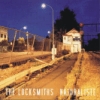 I have sometimes heard The Lucksmiths accused of being too saccharine and while the saccharine charge of the indictment might be indefensible, I would almost certainly take issue with the "too." I would argue that pop such as this would demand a little sweetness, and I submit that The Lucksmiths have found seemingly the perfect amount for their latest album.
I have sometimes heard The Lucksmiths accused of being too saccharine and while the saccharine charge of the indictment might be indefensible, I would almost certainly take issue with the "too." I would argue that pop such as this would demand a little sweetness, and I submit that The Lucksmiths have found seemingly the perfect amount for their latest album.
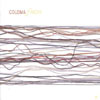 A taste for histrionics may be necessary when listening to the newest music from Alex Paulick and Rob Taylor. Every second of sound is rendered full of nuance and silky ease by way of gentle percussion, wavering melodies, and a deep bass resonance. On top of that is Taylor's voice. It is a voice that immediately reminds of me of lounge act vocalists and jazz crooners howling beneath a deep dark sky lit only by a cloud-veiled moon.
A taste for histrionics may be necessary when listening to the newest music from Alex Paulick and Rob Taylor. Every second of sound is rendered full of nuance and silky ease by way of gentle percussion, wavering melodies, and a deep bass resonance. On top of that is Taylor's voice. It is a voice that immediately reminds of me of lounge act vocalists and jazz crooners howling beneath a deep dark sky lit only by a cloud-veiled moon.
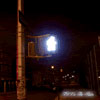 Recorded in a bedroom by three New York artist/musicians, "Young Liars"is the first release from TV On The Radio, and introduces them as afascinating experiment, with a sound that's original and memorable. Themusic groans and creaks beneath the vocals, churning almost, repletewith droning guitars and thudding drums. The percussion is at timesprovided by live drums, or accented with programmed beats, andallegedly sheets of tin. Collages of sampled loops materializemomentarily and then drift away. The most intriguing aspect of "YoungLiars" has to be the vocals, full bodied and soulful, they wouldn'tsound out of place being backed by a funky bass line and horn section,or at the head of some gospel choir like in their acapella rendering ofthe Pixies' "Mr. Grieves." On that hidden track, they sound like awayward choir group, giving the song a great workout that swings as ifit were instead an attack on "Take the A Train." "Satellite" kicks offthe EP with the introduction of this sound, a fuzzy thudding of staticwashed drums and bass with an incessant riff. Then the vocals kick inand it's so unlike the expected, "Now I'm waiting for a signal or asound, where can you be found now? Where can you be, waiting for asignal or a sound?" The song lopes along at a speedy pace, and thelyrics dribble over the beats along with it. "Staring at the Sun" is anabstract love song, a collection of images or glances from up close."Blind" is a slow, creeping track that pulses along as errant noisesappear just above it. The group has a knack for memorable lines thatconnect through their lyrical collections like "My love is a suckerbet." It's a departure from the speed of the first tracks, showing thatthey're capable of producing more methodical atmospheres, and againshowcasing those vocals as they play around in the space left by theinstrumentation. "Young Liars" is an excellent first taste that leavesus to anticipate the upcoming full length
Recorded in a bedroom by three New York artist/musicians, "Young Liars"is the first release from TV On The Radio, and introduces them as afascinating experiment, with a sound that's original and memorable. Themusic groans and creaks beneath the vocals, churning almost, repletewith droning guitars and thudding drums. The percussion is at timesprovided by live drums, or accented with programmed beats, andallegedly sheets of tin. Collages of sampled loops materializemomentarily and then drift away. The most intriguing aspect of "YoungLiars" has to be the vocals, full bodied and soulful, they wouldn'tsound out of place being backed by a funky bass line and horn section,or at the head of some gospel choir like in their acapella rendering ofthe Pixies' "Mr. Grieves." On that hidden track, they sound like awayward choir group, giving the song a great workout that swings as ifit were instead an attack on "Take the A Train." "Satellite" kicks offthe EP with the introduction of this sound, a fuzzy thudding of staticwashed drums and bass with an incessant riff. Then the vocals kick inand it's so unlike the expected, "Now I'm waiting for a signal or asound, where can you be found now? Where can you be, waiting for asignal or a sound?" The song lopes along at a speedy pace, and thelyrics dribble over the beats along with it. "Staring at the Sun" is anabstract love song, a collection of images or glances from up close."Blind" is a slow, creeping track that pulses along as errant noisesappear just above it. The group has a knack for memorable lines thatconnect through their lyrical collections like "My love is a suckerbet." It's a departure from the speed of the first tracks, showing thatthey're capable of producing more methodical atmospheres, and againshowcasing those vocals as they play around in the space left by theinstrumentation. "Young Liars" is an excellent first taste that leavesus to anticipate the upcoming full length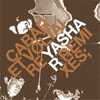 In 1982, the original version of "Yashar" ushered in a new phase ofCabaret Voltaire. While the group had been working for years with drummachines, they were only up until then teasing the ideas of dancemusic. Originally on the 2x45release and later remixed for 12" by John Robie, this was undeniablythe beginning of what soon became their dancefloor-friendly big funkphase. Once the classic opening voice-only sample sounds, "there's 70billion people in there / where're they hiding," everybody knows thefamiliar pumping beats and evil synth melody that is about to follow.While remixing songs that weren't exactly discotheque smashes hasbecome commonplay, there's a lot at stake when considering remixingsomething that has become somewhat of a sacred underground dancefloorlegend. The results are very nice indeed. This three-track 12" onlyrelease is covered on side one by a vicious, nearly ten minutethunderous mayhem by Alter Ego which I have had to force myself fromnot repeating endlessly. While only the underlying synth stem remains,the power and energy from the original is exponentially magnified. Tenminutes can be a long time but with this, it seems like it couldhonestly go on forever. Side two features the proverbial rework byRichard H. Kirk: "The Man from Basra" remix honorably matches theenergy set forth by the A side. Kirk imports the familiar vocal samplesfrom the original and continues on in a hypnotic five minute synth soupof constructive 808, 909, and African-imitative sounds. Rounding outthe second side is The All Seeing I remix, which most closely resemblesthe original remix done by John Robie with the singing girls and higherpitched synth melody. This version also pays tribute to the popularsounds of the 1990s Cabaret Voltaire with its downtempo beats, heavilyrelied upon by primitive analogue drum machine sounds. The only beef Ihave with the single is its $9 import 12" price that I had to forkover, making me recommend NovaMute to do another goddamned CDcompilation like the one aforementioned this week. Die hard non-UK fanswho miss out on this risk their chances of this not making the nextcompilation (or no next compilation at all). With any luck, Mute willwise up and give a break for their export single prices.
In 1982, the original version of "Yashar" ushered in a new phase ofCabaret Voltaire. While the group had been working for years with drummachines, they were only up until then teasing the ideas of dancemusic. Originally on the 2x45release and later remixed for 12" by John Robie, this was undeniablythe beginning of what soon became their dancefloor-friendly big funkphase. Once the classic opening voice-only sample sounds, "there's 70billion people in there / where're they hiding," everybody knows thefamiliar pumping beats and evil synth melody that is about to follow.While remixing songs that weren't exactly discotheque smashes hasbecome commonplay, there's a lot at stake when considering remixingsomething that has become somewhat of a sacred underground dancefloorlegend. The results are very nice indeed. This three-track 12" onlyrelease is covered on side one by a vicious, nearly ten minutethunderous mayhem by Alter Ego which I have had to force myself fromnot repeating endlessly. While only the underlying synth stem remains,the power and energy from the original is exponentially magnified. Tenminutes can be a long time but with this, it seems like it couldhonestly go on forever. Side two features the proverbial rework byRichard H. Kirk: "The Man from Basra" remix honorably matches theenergy set forth by the A side. Kirk imports the familiar vocal samplesfrom the original and continues on in a hypnotic five minute synth soupof constructive 808, 909, and African-imitative sounds. Rounding outthe second side is The All Seeing I remix, which most closely resemblesthe original remix done by John Robie with the singing girls and higherpitched synth melody. This version also pays tribute to the popularsounds of the 1990s Cabaret Voltaire with its downtempo beats, heavilyrelied upon by primitive analogue drum machine sounds. The only beef Ihave with the single is its $9 import 12" price that I had to forkover, making me recommend NovaMute to do another goddamned CDcompilation like the one aforementioned this week. Die hard non-UK fanswho miss out on this risk their chances of this not making the nextcompilation (or no next compilation at all). With any luck, Mute willwise up and give a break for their export single prices.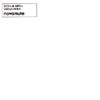 Easily one of my favorite labels, Novamute serves as the dance-orientedwing of the ever-enduring Mute Records machine. More than a fair dealof its materials comes out exclusively on vinyl, leaving the widerconsumer market unexposed to some of the best electronic music around.An effort to both rectify this and to tap into the growing market of CDand "digital" DJs, 2CDs and MP3soffers 16 audio tracks and 28 somewhat overlapping MP3 files.Considering the strength of the Novamute roster (as well as that of theextended Mute family), the selections range from techno floorfillersand electro booty grooves to chin-scratching warm-ups andindustrial/EBM reworks. Though there are many enjoyabledancefloor-friendly cuts, the first noteworthy track comes from S.I.Futures. The FX mix of "Eurostar" takes the melodic vocoding of theelectro original and injects a rejuvenating funky vibe. Speedy J'sunedited cut of "Krekc," the lead single from his recent Loudboxeralbum, blisters the eardrums with seriously banging techno meant forwarehouses. EBM fanatics will either be disturbed or delighted to hearThomas P. Heckmann's update of the Nitzer Ebb anthem "Join In TheChant." Though the distinctive bassline remains admirably true to theoriginal, Douglas McCarthy's completely vocoded vocals seem almostblasphemous. As an industrial club DJ, I have tested the dancefloorseveral times with this, and while it does not go over as well as theoriginal, it still gets a great crowd response. Continuing theindustrial updates, Akufen's quirky remix of Cabaret Voltaire's "NagNag Nag" mangles the original beyond recognition yet manages to salvagethe wreck by throwing in a gritty 4/4 beat at about the halfway point.The laugh factor behind Debasser's "Fat Girls" thankfully does not takeaway from its appeal as a bass heavy booty mover, and sounds far betterthan most of the socalled "ghetto-tech" coming out today. HansWeekhout's "Rhythm Is On A Mission" treads a murky territory betweentechno and progressive house, with echoing synth stabs and tribalmachine beats. The MP3 content gives plenty of B-sides includingfurther goodies from the artists mentioned above as well as Tim Wright,Umek, Steve Stoll, and Luke Slater. All in all, this is not merely agreat compilation, but rather a pioneering release that will hopefullybegin a trend.
Easily one of my favorite labels, Novamute serves as the dance-orientedwing of the ever-enduring Mute Records machine. More than a fair dealof its materials comes out exclusively on vinyl, leaving the widerconsumer market unexposed to some of the best electronic music around.An effort to both rectify this and to tap into the growing market of CDand "digital" DJs, 2CDs and MP3soffers 16 audio tracks and 28 somewhat overlapping MP3 files.Considering the strength of the Novamute roster (as well as that of theextended Mute family), the selections range from techno floorfillersand electro booty grooves to chin-scratching warm-ups andindustrial/EBM reworks. Though there are many enjoyabledancefloor-friendly cuts, the first noteworthy track comes from S.I.Futures. The FX mix of "Eurostar" takes the melodic vocoding of theelectro original and injects a rejuvenating funky vibe. Speedy J'sunedited cut of "Krekc," the lead single from his recent Loudboxeralbum, blisters the eardrums with seriously banging techno meant forwarehouses. EBM fanatics will either be disturbed or delighted to hearThomas P. Heckmann's update of the Nitzer Ebb anthem "Join In TheChant." Though the distinctive bassline remains admirably true to theoriginal, Douglas McCarthy's completely vocoded vocals seem almostblasphemous. As an industrial club DJ, I have tested the dancefloorseveral times with this, and while it does not go over as well as theoriginal, it still gets a great crowd response. Continuing theindustrial updates, Akufen's quirky remix of Cabaret Voltaire's "NagNag Nag" mangles the original beyond recognition yet manages to salvagethe wreck by throwing in a gritty 4/4 beat at about the halfway point.The laugh factor behind Debasser's "Fat Girls" thankfully does not takeaway from its appeal as a bass heavy booty mover, and sounds far betterthan most of the socalled "ghetto-tech" coming out today. HansWeekhout's "Rhythm Is On A Mission" treads a murky territory betweentechno and progressive house, with echoing synth stabs and tribalmachine beats. The MP3 content gives plenty of B-sides includingfurther goodies from the artists mentioned above as well as Tim Wright,Umek, Steve Stoll, and Luke Slater. All in all, this is not merely agreat compilation, but rather a pioneering release that will hopefullybegin a trend. - Debasser - Fat Girls
- Hans Weekhout - Rhythm is On A Mission
- Cabaret Voltaire - Nag Nag Nag (Akufen remix)
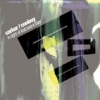 Paul Conboy and Adrian Corker create instrumental music with mostlyelectronic percussion and nuance, but layered with acoustic guitars.Once I slipped their debut on the stereo, I was immediately at ease,relaxed, and open to every possibility. Playful bass and latin jazzrhythms mark one track, slower moody computer whines and echoed guitarthe next, but throughout there's a coordinated groove or feel thatevery composition nuzzles up to lovingly. It's not stunning,demonstrative, or the next big style shift, but it doesn't have to beto be effective. Corker/Conboy may borrow a bit from the aesthetic ofothers — Tortoise, Pullman, and Isotope 217 come to mind — but itdoesn't mean they breathe any less life into their work. Playing mostof the instruments themselves, the duo have a true fluidity and ease totheir songs. The music starts off lightly, establishing rhythm andtempo, and doesn't build so much as coagulate. Each part or instrumenthas its own time, its own place, but ultimately they exist to fulfillthe needs of the whole composition. Listening to a track like "From theHip," hearing its simplicity, and being thrown slightly by the littletinges here and there set my mind at ease, almost into REM-like stasis.One minute I was in a sweaty nightclub hearing a neo jazz outfit, thenext in the rainforest hearing the most advanced tribe of natives tapout their steady labor. In Light of That Learnt Laterflows through despite its various genre bends, and it's an excellentdriving companion — the best compliment I can think to give it.
Paul Conboy and Adrian Corker create instrumental music with mostlyelectronic percussion and nuance, but layered with acoustic guitars.Once I slipped their debut on the stereo, I was immediately at ease,relaxed, and open to every possibility. Playful bass and latin jazzrhythms mark one track, slower moody computer whines and echoed guitarthe next, but throughout there's a coordinated groove or feel thatevery composition nuzzles up to lovingly. It's not stunning,demonstrative, or the next big style shift, but it doesn't have to beto be effective. Corker/Conboy may borrow a bit from the aesthetic ofothers — Tortoise, Pullman, and Isotope 217 come to mind — but itdoesn't mean they breathe any less life into their work. Playing mostof the instruments themselves, the duo have a true fluidity and ease totheir songs. The music starts off lightly, establishing rhythm andtempo, and doesn't build so much as coagulate. Each part or instrumenthas its own time, its own place, but ultimately they exist to fulfillthe needs of the whole composition. Listening to a track like "From theHip," hearing its simplicity, and being thrown slightly by the littletinges here and there set my mind at ease, almost into REM-like stasis.One minute I was in a sweaty nightclub hearing a neo jazz outfit, thenext in the rainforest hearing the most advanced tribe of natives tapout their steady labor. In Light of That Learnt Laterflows through despite its various genre bends, and it's an excellentdriving companion — the best compliment I can think to give it. 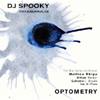 If you happened to catch any of the installments of Ken Burns'sprawling nineteen hour documentary on jazz a few years back, you mayhave wondered what exactly happened to jazz in the second half of thetwentieth century. The filmmaker's heavy reliance on Wynton Marsalisand the various other talented members of his family tended to skew thefocus of the series in the direction of Wynton's classicist ideals. The1960's and beyond are crammed into the last hour of this mammothseries, an injustice to say the least. Adding insult to injury,Wynton's commentary is particularly dismissive of the strides taken byicons like Miles Davis toward a more inclusive and adaptive mode ofjazz music known as fusion. When it is referenced at all, the music ofMiles-disciple Chick Corea or electric-guitar virtuoso Pat Metheny istalked about as if it were a negative influence threatening to ruinjazz. This is a shame, because the experiments of fusion andavant-garde jazz should be viewed as every bit as vital as the classicstyle; god forbid anyone try and avoid becoming stale. For the past fewyears, indie label Thirsty Ear has issued music under their 'BlueSeries' banner, releasing music that blends and transforms jazz, hiphop, rap, and electronic music with some interesting pairings. On thisrelease, modern jazz pianist and Blue Series curator Matthew Shipp andhis group back up DJ Spooky as he indulges his thirst for progressiveintellectualism in music. Spooky clearly wants to incorporate as muchas he can into his music, as evidenced by a few of the names dropped inthe liner notes (Duchamps, Dostoyevsky, Cage, Ellington, Berners-Lee,Bambatta). In text this might make you wary, but on record Optometryis a fascinating excursion, with Spooky and Shipp navigating throughthe blurry water of fusion brilliantly. Kicking off with the familiarride and high hat clicking, the slinky upright bass line (manned bySpooky himself) rising through, Optometry throws a curveball bycutting, mixing, and looping the beats, a subtle addition that workswell. Programmed beats, electronic throbs, and wailing violin all findspots on the record, and are used to great effect, counterpointing thetraditional (but only in instrumentation) jazz quartet. Shipp is aversatile pianist, and his hands float across the keys weaving amazingpatterns of tone, able to rise above the mix whenever necessary. Guestsappear, giving us Carl Hancock Rux's smooth spoken word delivery over"Asphalt (Tome II)," where he waxes on about Coltrane and Lil' Kim,minidisks and turntables. Essentially, it is the mission concept of therecord. Jon McPhee's tenor sax croaks around Rux's witnessing, makingthis a true standout. High Priest of Anti-Pop Consortium and Napoleonof IsWhat also appear, lending their hip-hop skills other tracks, theformer sounding stronger than the latter. 'Optometry' is the essence ofexperimentation. Grounded in the jazz medium, it looks outside ofitself for inspiration and seeks to infuse new blood, not just intojazz, but into the styles it couples with. Jazz is not a museum. Musicnever should be. It has strength and power, enough to offer somethingto contemporary music and retain its rich history. The Blue Seriesseems to have a hold on that, thankfully. 'Optometry' is not at all thekind of record you would find in Wynton Marsailis' collection, but inmy opinion, that stands as more of a recommendation of this than justabout anything else does.
If you happened to catch any of the installments of Ken Burns'sprawling nineteen hour documentary on jazz a few years back, you mayhave wondered what exactly happened to jazz in the second half of thetwentieth century. The filmmaker's heavy reliance on Wynton Marsalisand the various other talented members of his family tended to skew thefocus of the series in the direction of Wynton's classicist ideals. The1960's and beyond are crammed into the last hour of this mammothseries, an injustice to say the least. Adding insult to injury,Wynton's commentary is particularly dismissive of the strides taken byicons like Miles Davis toward a more inclusive and adaptive mode ofjazz music known as fusion. When it is referenced at all, the music ofMiles-disciple Chick Corea or electric-guitar virtuoso Pat Metheny istalked about as if it were a negative influence threatening to ruinjazz. This is a shame, because the experiments of fusion andavant-garde jazz should be viewed as every bit as vital as the classicstyle; god forbid anyone try and avoid becoming stale. For the past fewyears, indie label Thirsty Ear has issued music under their 'BlueSeries' banner, releasing music that blends and transforms jazz, hiphop, rap, and electronic music with some interesting pairings. On thisrelease, modern jazz pianist and Blue Series curator Matthew Shipp andhis group back up DJ Spooky as he indulges his thirst for progressiveintellectualism in music. Spooky clearly wants to incorporate as muchas he can into his music, as evidenced by a few of the names dropped inthe liner notes (Duchamps, Dostoyevsky, Cage, Ellington, Berners-Lee,Bambatta). In text this might make you wary, but on record Optometryis a fascinating excursion, with Spooky and Shipp navigating throughthe blurry water of fusion brilliantly. Kicking off with the familiarride and high hat clicking, the slinky upright bass line (manned bySpooky himself) rising through, Optometry throws a curveball bycutting, mixing, and looping the beats, a subtle addition that workswell. Programmed beats, electronic throbs, and wailing violin all findspots on the record, and are used to great effect, counterpointing thetraditional (but only in instrumentation) jazz quartet. Shipp is aversatile pianist, and his hands float across the keys weaving amazingpatterns of tone, able to rise above the mix whenever necessary. Guestsappear, giving us Carl Hancock Rux's smooth spoken word delivery over"Asphalt (Tome II)," where he waxes on about Coltrane and Lil' Kim,minidisks and turntables. Essentially, it is the mission concept of therecord. Jon McPhee's tenor sax croaks around Rux's witnessing, makingthis a true standout. High Priest of Anti-Pop Consortium and Napoleonof IsWhat also appear, lending their hip-hop skills other tracks, theformer sounding stronger than the latter. 'Optometry' is the essence ofexperimentation. Grounded in the jazz medium, it looks outside ofitself for inspiration and seeks to infuse new blood, not just intojazz, but into the styles it couples with. Jazz is not a museum. Musicnever should be. It has strength and power, enough to offer somethingto contemporary music and retain its rich history. The Blue Seriesseems to have a hold on that, thankfully. 'Optometry' is not at all thekind of record you would find in Wynton Marsailis' collection, but inmy opinion, that stands as more of a recommendation of this than justabout anything else does. It's rare that I hear a record and feel like every single song on itmakes me want to shut up and dance, but that's exactly what the debutfull-length by Susumu Mukai’s Zongamin does to me. It very well may bethe pop club album of the year, because it's this type of music thatgets the bodies and booties on the dancefloor. Zongamin's auralpastiche is an amalgam of myriad styles and musical configurations.Dance and club music created with live and electronic instrumentsalike, using latin, funk, jazz, rock, and techno rhythms, and allblended together into a formula that stutters, grooves, tweaks andslams. I took it all in one listen, just giving in to whatever washedover the speakers next. It wasn't easy: not any two songs on the recordhave the same flavor, and it's hard to give in to the whole enchilada.That's not a huge surprise for a first effort, as if Mukai is trying tofind a voice and gives his all in multiple directions. Something tellsme, though, that Mukai intended Zongamin to sound this disjointed ashis vision of what pop music should be: a place where anything andeverything is allowed. "Serious Trouble" gets the party started withits discobass and stroll style, but gives in to the drive of "Spiral,"easily the best track. "Painless," "Double Dostiev" and "Whiplash"makes for a great album centerpiece, clubbing it up, twisting andfreaking, then serving the almighty pummel into submission. After that,the album gets plain strange, with the differing styles fluctuating toextremes. The good news is that the record is an accomplished debutfrom a very talented artist. The bad news is he's being pulled in toomany directions at once, but would probably be tied down too much by asingular style. One thing is certain: Zongamin is an original voice,definitely the product of many influences, that can certainly generatemore than a few earnest gyrations.
It's rare that I hear a record and feel like every single song on itmakes me want to shut up and dance, but that's exactly what the debutfull-length by Susumu Mukai’s Zongamin does to me. It very well may bethe pop club album of the year, because it's this type of music thatgets the bodies and booties on the dancefloor. Zongamin's auralpastiche is an amalgam of myriad styles and musical configurations.Dance and club music created with live and electronic instrumentsalike, using latin, funk, jazz, rock, and techno rhythms, and allblended together into a formula that stutters, grooves, tweaks andslams. I took it all in one listen, just giving in to whatever washedover the speakers next. It wasn't easy: not any two songs on the recordhave the same flavor, and it's hard to give in to the whole enchilada.That's not a huge surprise for a first effort, as if Mukai is trying tofind a voice and gives his all in multiple directions. Something tellsme, though, that Mukai intended Zongamin to sound this disjointed ashis vision of what pop music should be: a place where anything andeverything is allowed. "Serious Trouble" gets the party started withits discobass and stroll style, but gives in to the drive of "Spiral,"easily the best track. "Painless," "Double Dostiev" and "Whiplash"makes for a great album centerpiece, clubbing it up, twisting andfreaking, then serving the almighty pummel into submission. After that,the album gets plain strange, with the differing styles fluctuating toextremes. The good news is that the record is an accomplished debutfrom a very talented artist. The bad news is he's being pulled in toomany directions at once, but would probably be tied down too much by asingular style. One thing is certain: Zongamin is an original voice,definitely the product of many influences, that can certainly generatemore than a few earnest gyrations.


